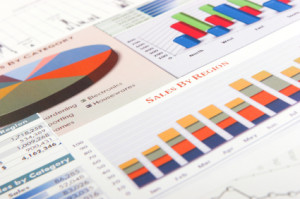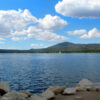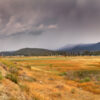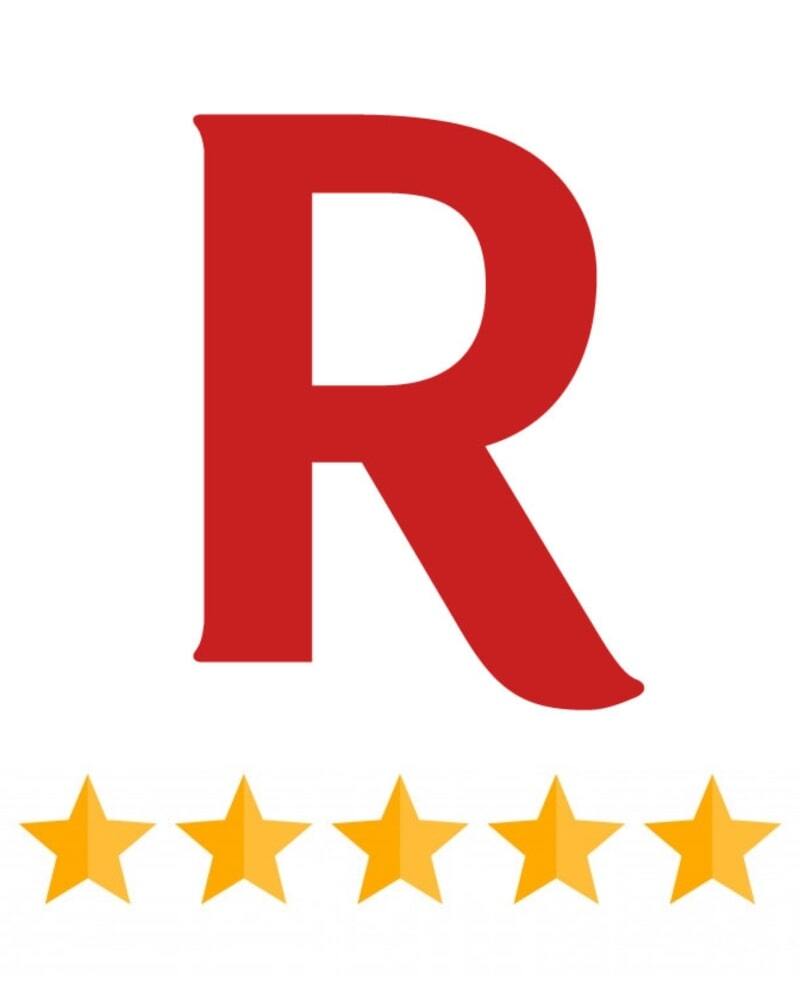Big Bear Home Sales
Home sales in Big Bear rose over 37% in June when compared to the May numbers (77 v. 56), and over 24% when compared to June 2008 (77 v. 62). This is great news for the Big Bear real estate market. In fact, June was the best month for home sales that we have seen since Sept. 2008.
25, or 32%, of the 77 home sales in Big Bear were bank owned. This is a little higher than last month, but still well below the 50% mark we were seeing earlier in the year. 5 of the sales, or 6%, were short sales. That means 47, or 62%, of the sales in June 2009 were “organic”, or traditional sellers – another strong months for them.
It will interesting to see how the rest of the year plays out. There is without a doubt still a large number of foreclosure properties that will be hitting the market. The effect they have on the number of sales & pricing is yet to be seen.
Big Bear Home Prices
For the fourth straight month the median sales price in Big Bear has gone up. More importantly though, for the first time in well over 2 years, the median sales price increased when compared to the same month the year before.
The median sales price in June was $265,000, 13% higher than last month and a modest, yet significantly important, 7% increase from June 2008. (See the chart below for the historical median prices).
If this continues to happen, it could be the sign of a market bottom or stabilization. But, with all the foreclosures still coming up, along with the job losses, I don’t see prices continuing to rise that much. Every month is a new story.
There is a $45,000 difference between the median asking price of $310,000 and the median selling price of $265,000. This is about 1/2 as much as it has been the previous months, another good sign for the real estate market here in Big Bear.
Some “organic” sellers are starting to understand that if they want to sell, they need to be priced very aggressively. More times than not though this comes after being on the market for many months – a hard lesson.
The median asking price for bank owned & short sales properties in Big Bear during June was $199,450, $65,000 below the median selling price. More importantly, it is $110,000, or 36%, below the median asking price for “organic” sellers. It is no wonder that bank owned properties in Big Bear are seeing 2-6 offers within the first 1-2 weeks there are on the market while other sellers are lucky to get 2-6 showings, let alone offers, in the first couple months.
Homes Currently on the Market
The number of properties on the market for sale in Big Bear stands at a total of 927. This is interesting as I expected to see it rising faster than this. It has been hovering around 900 for the past 6 months. The lower this number stays, the better is will be for sellers as this means less competition. And the summer season means increased buyers. If it stays under 1000 homes for sale in Big Bear, and sales continue to pick up, things might start looking up for Big Bear home sellers.
Big Bear Home Sales – Thru June 2009
| Month and Year | # Homes For Sale | Median Asking $ | # Homes Sold | Median Sales $ |
|---|---|---|---|---|
| June 2009 | 927 | $310,000 | 77 | $265,000 |
| May 2009 | 902 | $316,000 | 56 | $235,000 |
| April 2009 | 894 | $300,000 | 61 | $205,000 |
| Mar 2009 | 893 | $299,950 | 54 | $179,500 |
| Feb 2009 | 889 | $309,000 | 57 | $217,000 |
| Jan 2009 | 902 | $319,000 | 47 | $220,000 |
| Dec 2008 | 956 | $320,905 | 41 | $262,000 |
| Nov 2008 | 1032 | $325,000 | 50 | $240,287 |
| Oct 2008 | 1078 | $329,000 | 73 | $255,000 |
| Sept 2008 | 1109 | $328,500 | 82 | $224,500 |
| Aug 2008 | 60 | $282,500 | ||
| July 2008 | 62 | $205,000 | ||
| June 2008 | 62 | $247,500 | ||
| May 2008 | 67 | $290,000 | ||
| April 2008 | 50 | $299,500 | ||
| Mar 2008 | 1082 | $339,950 | 49 | $288,000 |
| Feb 2008 | 1049 | $345,000 | 34 | $249,950 |
| Jan 2008 | 1094 | $339,900 | 30 | $283,250 |
| Dec 2007 | 55 | $273,750 | ||
| Nov 2007 | 66 | $282,500 | ||
| Oct 2007 | 53 | $310,000 | ||
| Sept 2007 | 60 | $269,750 | ||
| Aug 2007 | 81 | $310,000 | ||
| July 2007 | 70 | $293,450 | ||
| June 2007 | 59 | $350,000 |
Second Quarter Comparison (4/1 – 6/30)
| Year | # of Homes Sold | Median Sales Price | Average Sales Price | Days on Market | List Price to Sales Price |
|---|---|---|---|---|---|
| 2009 | 196 | $239,500 | $286,771 | 128 | 96% |
| 2008 | 180 | $278,795 | $340,689 | 133 | 94% |
| 2007 | 196 | $339,450 | $472,228 | 122 | 95% |
| 2006 | 308 | $305,000 | $381,327 | 72 | 97% |
| 2005 | 473 | $277,000 | $354,825 | 68 | 98% |
| 2004 | 492 | $224,450 | $269,980 | 81 | 98% |
| 2003 | 371 | $180,000 | $218,456 | 49 | 97% |
Year To Date Comparison (1/1- 6/30)
| Year | # of Homes Sold | Median Sales Price | Average Sales Price | Days on Market | List Price to Sales Price |
|---|---|---|---|---|---|
| 2009 | 363 | $220,000 | $286,014 | 131 | 95% |
| 2008 | 293 | $279,000 | $356,493 | 134 | 94% |
| 2007 | 409 | $320,000 | $420,823 | 121 | 96% |
| 2006 | 586 | $318,000 | $394,127 | 75 | 97% |
| 2005 | 800 | $273,000 | $341,074 | 77 | 98% |
| 2004 | 853 | $215,000 | $257,814 | 85 | 98% |
| 2003 | 721 | $177,000 | $216,101 | 51 | 98% |
Year to date, sales in 2009 are up 24% from the 2008 number, but prices are still down 22% & 20% respectively for the median & average sales prices. Prices continue to remain the same range that we saw in 2004.
Want more? Be sure to sign up for my email newsletter or RSS feed.
* Note: The charts above will be updated on a monthly basis. It represents single family home sales in the Big Bear area, including Big Bear Lake, Big Bear City, Moonridge, Fox Farm, Sugarloaf, Erwin Lake, & Fawnskin. Data courtesy of the Big Bear MLS. These numbers do not include raw land or condos nor does not include homes in the Big Bear MLS that are located out of the Big Bear area.
Related Articles
Big Bear Home Sales – May 2009
Bank Owned & Short Sale Homes Taking Market Share In Big Bear








So the median is increasing, but is that a result of prices increasing or a change in the mix of what is selling. Here in Orange County, our median has also increased but it is clearly the result of more higher-end homes selling. The Case-Shiller numbers are remaining constant. Have you done or seen a Case-Shiller or similar paired sales analysis for Big Bear? That would be useful.
Regardless, it is clear that the artificially low interest rates, govt incentives and the temporary rebound in the stock market has stabilized the housing market — at least for the short term. My guess is that the crash resumes after the summer selling season.
Case Shiller is a paired sales index. In other words, they compare various sales prices for the same properties to determine a numeric value for home prices at a given point in time. By comparing those values, they are able to adjust for the mix of properties selling. It’s a more accurate measurement, in my opinion. Case Shiller does track the 20 largest metropolitan regions. I’ve seen local realtors create “mini-Case Shiller indices” for their own neighborhoods and they are very helpful.
The median can be skewed if the mix of properties change. For example, imagine 5 properties sold last year for 100, 100, 200, 300 and 400, respectively. The median is 200. This is what the market looked like last year — lots of low end homes selling. Now imagine that each of those properties sold again for 10% less, but, two additional high end homes sold. The data set now looks like this: 90, 90, 180, 270, 360, 360 and 360. Your median is now 270. It looks like the median has gone up, whereas each individual property is still losing value. It’s a weakness of the median — it tends to overstate the decline in the beginning of a real estate crash, and overstate the recovery towards the end.
Many real estate observers have predicted a rise in median this year due to this effect. And like I said, that’s exactly what we’re seeing here in Orange County. Sounds like you aren’t getting more high end properties selling in Big Bear, so you may be right about prices bottoming there. Each market is indeed different.
Orange County is a tale of two markets. The sub $500k market is down 40%+ in prices, and is likely close to bottom. The high end market is not down nearly as much (in fact, many sellers want a premium over their 2006/2007 purchase price!), but inventory is piling up and volumes are anemic — we have over 10 years of inventory in some high end price segments! To me, that foreshadows a violent price correction. When I say I expect the crash to resume, I am mostly referring to the second leg — the high end homes. In OC, that’s anything $1.5M and above. We largely avoided the subprime problem, but it’s going to get ugly here.
You are right, the buyers are certainly out there. I’m one — I’ve been waiting to buy my move-up home for 3 years. But like you said, it’s a question of properly priced properties. Banks properly price their properties, so they sell with multiple offers. Organic sellers often don’t, so their properties sit on the market.
Anyway, I enjoy your posts. You do good statistical work and you are a realist about the market, both good and bad. Thanks.